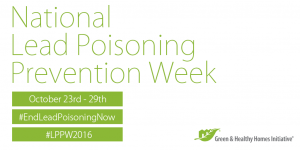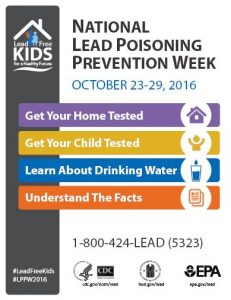Healthy Homes, Healthy Families: Elevator Chris Steinhoff is Leading the Way
 In an effort to provide more comprehensive services to the people we serve, especially low-income populations, Elevate is working towards identifying and solving home-based health hazards that we discover while doing energy efficiency work. These home-base health hazards are often a barrier to weatherization for our low- to moderate-income homeowners. To support this work, Elevate Construction Manager Chris Steinhoff became one of the first 260 Building Performance Institute (BPI) certified professionals to receive the Healthy Home Evaluator (HHE) certification from BPI and the Green & Healthy Homes Initiative (GHHI).
In an effort to provide more comprehensive services to the people we serve, especially low-income populations, Elevate is working towards identifying and solving home-based health hazards that we discover while doing energy efficiency work. These home-base health hazards are often a barrier to weatherization for our low- to moderate-income homeowners. To support this work, Elevate Construction Manager Chris Steinhoff became one of the first 260 Building Performance Institute (BPI) certified professionals to receive the Healthy Home Evaluator (HHE) certification from BPI and the Green & Healthy Homes Initiative (GHHI).
The HHE certification is intended to help the nation’s healthy housing, weatherization, and home performance workforce conduct assessments in homes to determine conditions that may adversely affect occupant health and safety. “I see health and safety issues in almost all the homes we assess, particularly those in low-income areas. Many of the issues are a result of deferred maintenance, and oftentimes you can’t begin energy efficiency work if you don’t address those issues first,” said Chris. “Now we’re able to identify these issues easily, and establish programs that address them in addition to reducing energy costs.”
“The HHE certification is a good addition to our construction teams’ expertise and allows us to deliver a more comprehensive service. When we communicate with our partner contractors as well as building owners, it gives us more credibility and leverage when addressing health and safety issues,” said Chris.
According to the Department of Housing and Urban Development, “Healthy Homes” is a century-old concept that promotes safe, decent, and sanitary housing as a means for preventing disease and injury. Emerging scientific evidence links health outcomes such as asthma, lead poisoning, and unintentional injuries to substandard housing.
Some common home-based health hazards include:
- Lead-based paint
- Asthma triggers
- Moisture and mold
- Volatile Organic Compounds (VOCs)
- Asbestos
- Radon
- Carbon monoxide leaks
- Potential fire hazards
- Trip and fall hazards
- Pest management
 Home Hazard Spotlight: Lead
Home Hazard Spotlight: Lead
Decades after ending lead in paint, gasoline, and other sources, lead poisoning remains one of the nation’s most devastating environmental health threats. Nearly half a million children living in the United States have elevated blood lead levels that may cause significant damage to their health, according to the Centers for Disease Control and Prevention (CDC). To increase awareness of childhood lead poisoning prevention, we’re participating in National Lead Poisoning Prevention Week from October 23rd-29th. Check out our Facebook and Twitter for posts on steps you can take, big and small, to prevent lead poisoning.
Chris’s certification is an important step to ramping up our healthy homes work to identify possible hazards like lead when we do energy efficiency upgrades. Chris took a rigorous exam as part of the pilot phase of the HHE certification and now is one of a handful of professionals in North America to hold this certification. We are so lucky to have his expertise on our team as we work to take a more holistic approach to creating energy efficient, healthy and safe homes for families everywhere.




